Mining Durian
The ecological, social and economic crisis looming over Eastern Thailand --- [Estimated Reading Time: 30 min.]
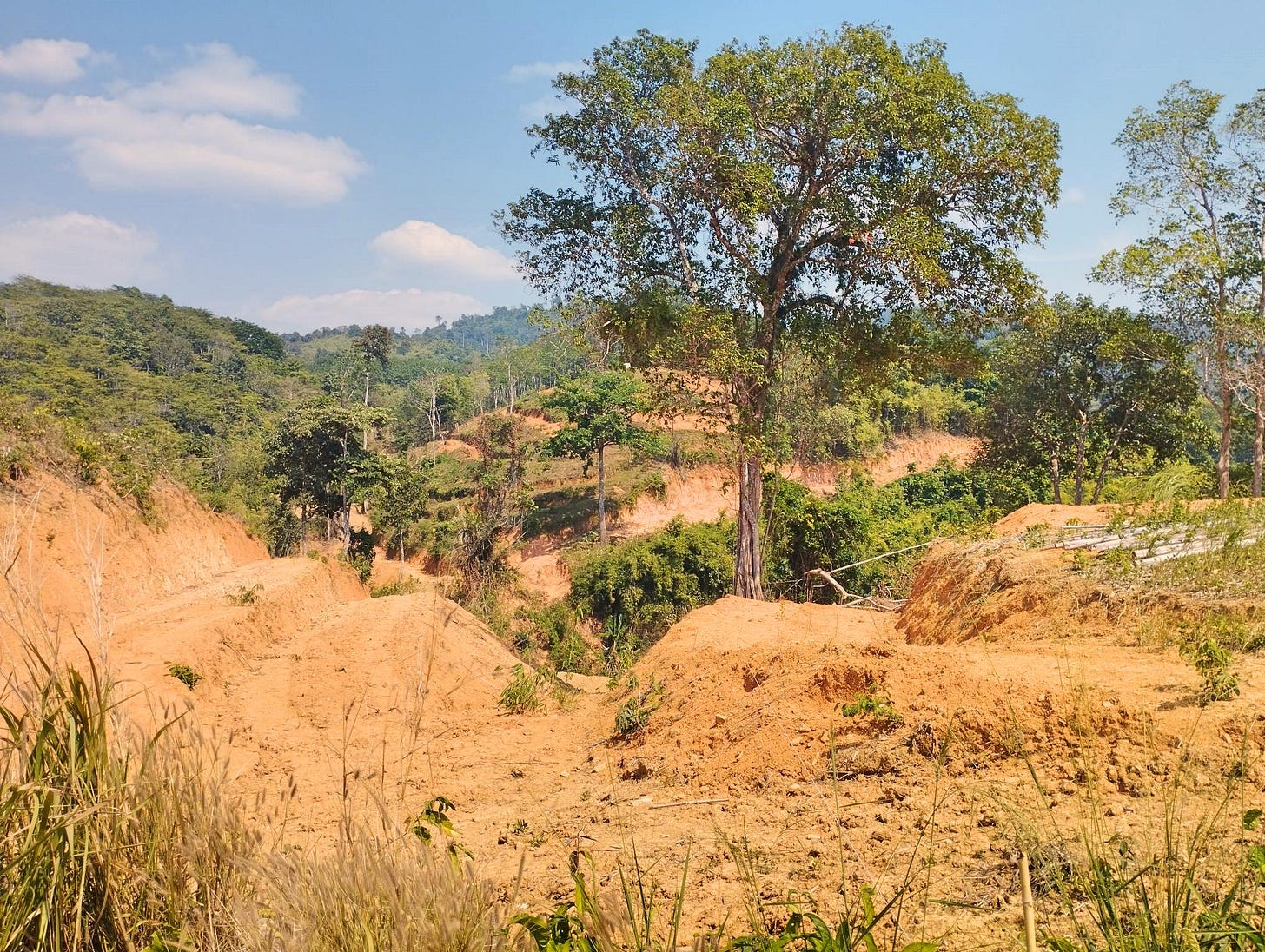
All names in the following text have been changed to protect the privacy of the people in our community.
The biosphere is collapsing. There is no easier, less gloomy way to say this, no hope-inspiring way to rephrase this for a broader audience. It is what it is. It is happening right now, in front of our eyes, and nobody seems to be able to stop it. In the parts of the world where long-term data is available, the findings are alarming. In some German National Parks, insect abundance – the overall number of insects – has declined by up to 75 percent, and there is no reason to believe that this trend is limited to central Europe. If we would have the same data for Southeast Asia, I believe we would find a similar collapse in insect populations. We can feel the decline in insects, and concomitantly in birds, rodents, reptiles and amphibians, all the species that depend on insects as their main staple.
This year is the first year the Durian harvest will fail in our district, says Uncle Tip, one of our friends from the village close to where we live. Usually, around this time of the year, the branches are so heavy that they have to be tied to the main trunk with plastic ropes, else they might break off from the sheer weight of the many Durians. But this year, there are many trees who bear only half of their usual load, and some that have almost no fruit at all. Asked if he has seen anything like this before, Uncle Tip thoughtfully shakes his head. Never, in his entire life. Strong winds on three separate occasions partially defoliated the trees, and unseasonal heavy rain battered the first round of flowers just as they opened, washing away pollen and ripping off entire clusters. Left with fewer leaves to do photosynthesis, the trees simply couldn't afford to produce many flowers, no matter how much people spray and fertilize.
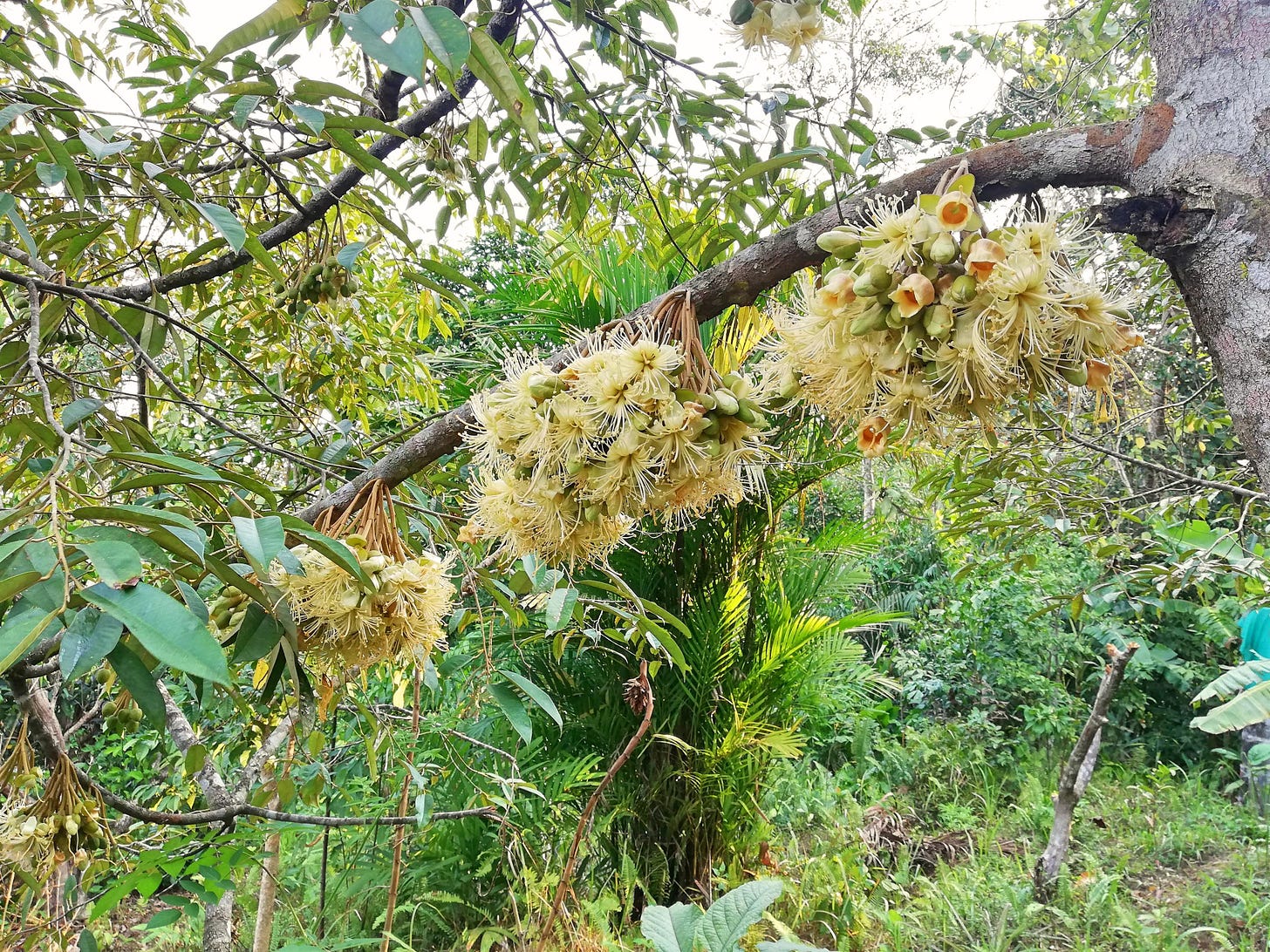
The flowers of Durian trees are large but delicate. They emerge in massive clusters right beneath the branches; somewhen between November and February, their sweet, buttery scent wafts through the orchards at night. The flowers start opening in the afternoon and are ready for pollination right after dusk, and people armed with headlamps and brooms on long bamboo poles range their orchards to pollinate the flowers by hand - due to the massive application of insecticides combined with habitat destruction, natural pollinators such as certain moths, bees, bugs and fruit bats won't do the job. Fruit bats, the most efficient pollinators of Durian flowers, are almost extinct in the area where we live. Several studies have shown that hand pollination does have the highest success rate, but judging from our own experience, the difference is miniscule. We did not pollinate our Durian flowers the first year we moved here, and after hand-pollinating them the second year as an experiment, we found that there was no big difference in the fruit quantity or quality. Hand-pollinated fruits are a bit more symmetrical, maybe, with equally large arils of flesh embedded in each segmented chamber (called a locule), and thus fetch better prices than those with irregular shapes.
If there are pollinators in the environment you inhabit, and you encourage them instead of poisoning them with weekly blanket applications of neurotoxins, Nature will do the job for you.
After the flowers open, it takes between 90 and 120 days for the fruit to mature, depending on the cultivar. The fruits develop sharp thorns on their husks, and grow to enormous sizes: a large Monthong Durian can weigh as much as ten kilos. As the harvest approaches, farmers become increasingly agitated. Their entire livelihood depends on the Durian harvest, and there are many dangers – real and perceived ones – that threaten to diminish their profits, among them wild elephants and killer fungi.
Like the wine culture of Western Europe, Southeast Asia has a lively “Durian culture.” There are competitions for the best fruit, Durian tastings, Durian holidays on Durian farms with Durian buffets, extremely expensive varieties, and, most importantly, a large number of connoisseurs, both professionals and amateurs. Deservedly, Durian is also called the “King of Fruits.” For us, Durian is – hands down – the most delicious fruit in the world. By far.1 The English language is severely limited in describing flavors, and every cultivar (or, as with seed-grown Durian, every individual tree) has a distinct taste, but Durian flesh might be described as a bit like an intense, immensely sweet, heavy buttercream, with hints of caramel, nuts, dairy, almond or cream cheese.
Durian is, by a massive margin, the number one cash crop in our province. Chanthaburi is often called “the Durian province,” and almost half of Thailand’s commercially cultivated Durian is grown here. Many people in the area, mostly large landowners of Chinese descent, got incredibly rich in a very short time, but even smaller farmers reaped windfall profits during the Durian boom of the last two decades. Durian exports doubled in the decade between 2001 and 2011, and prices increased to an average of 120 Baht per kilo for “Monthong,” the main commercial cultivar. According to the Ministry of Commerce, the country's total export value of fresh Durian reached about 3.5 billion USD in 2021, and about 80 to 90 percent of the harvest is sold straight to China. The prospect of getting rich quick drives people to intensify production, and to maximize harvests by any means necessary.
Another friend from the village, Som, tells us that although some people might claim they make a million Baht or more per year, after you subtract the expenses for fertilizers, pesticides, gasoline and motor oil for the massive water pumps and the ubiquitous brush cutters (plus the wages for the Cambodian harvest workers2), they are left with an average income of about 200,000 Baht per year, or about 6,000 USD – if this back-of-the-envelope calculation is true, that would mean over three quarters of annual profits go straight to Big Agriculture and Big Oil. Durian farming is definitely not the easy way towards wealth it is often proclaimed to be. True, the fruit fetches a better price than most other fruits on a per kilo basis – especially if you consider that only about 20-30 percent of its weight is actually edible, the rest is seed and husk – but what matters is net profit. Just because a single fruit can easily sell for 500 Baht or more (for comparison, the minimum wage is 350 Baht per day), this doesn’t necessarily mean your net profit per hectare is higher than someone planting a different crop.
To make matters worse, fertilizer prices increased by almost 100 percent over the last three years, while soil depletion and climate change further diminished profits at the same time.
A large water pump powered by an old car engine3 uses about 30 liters of gasoline each day (!), and one of our neighbors runs his pump every two days. That's a thousand Baht every two days, an exorbitant sum (especially when compared to the minimum wage), just for watering the trees for a single day.
At the weekly market, we overheard an old man wearing a gigantic wristwatch and a fancy, green button-down shirt printed with a durian pattern – characteristics of a big landowner – bragging loudly about how he (or, better, the Cambodians he pays to do the dirty work) planted “3,000 to 4,000 durian trees for his children and grandchildren.” Considering the damage that climate change already causes for Durian farmers, it is highly questionable how many of those trees will be left producing fruit for his grandchildren. Durian trees take about six years to start fruiting, and it takes up to ten years for substantial harvests to materialize – environmental conditions permitted. There are entire orchards in the village, mostly owned by rich folk in Bangkok who pay locals to spray chemicals, where the trees haven’t grown substantially in years, because the soil is beyond exhaustion and the trees are susceptible to repeated wind damage. Sometimes the owners themselves have never even set foot on the land; they have heard that Durian is a great investment opportunity, and simply pay middle men to do the menial task of selecting land and preparing and planting the site.
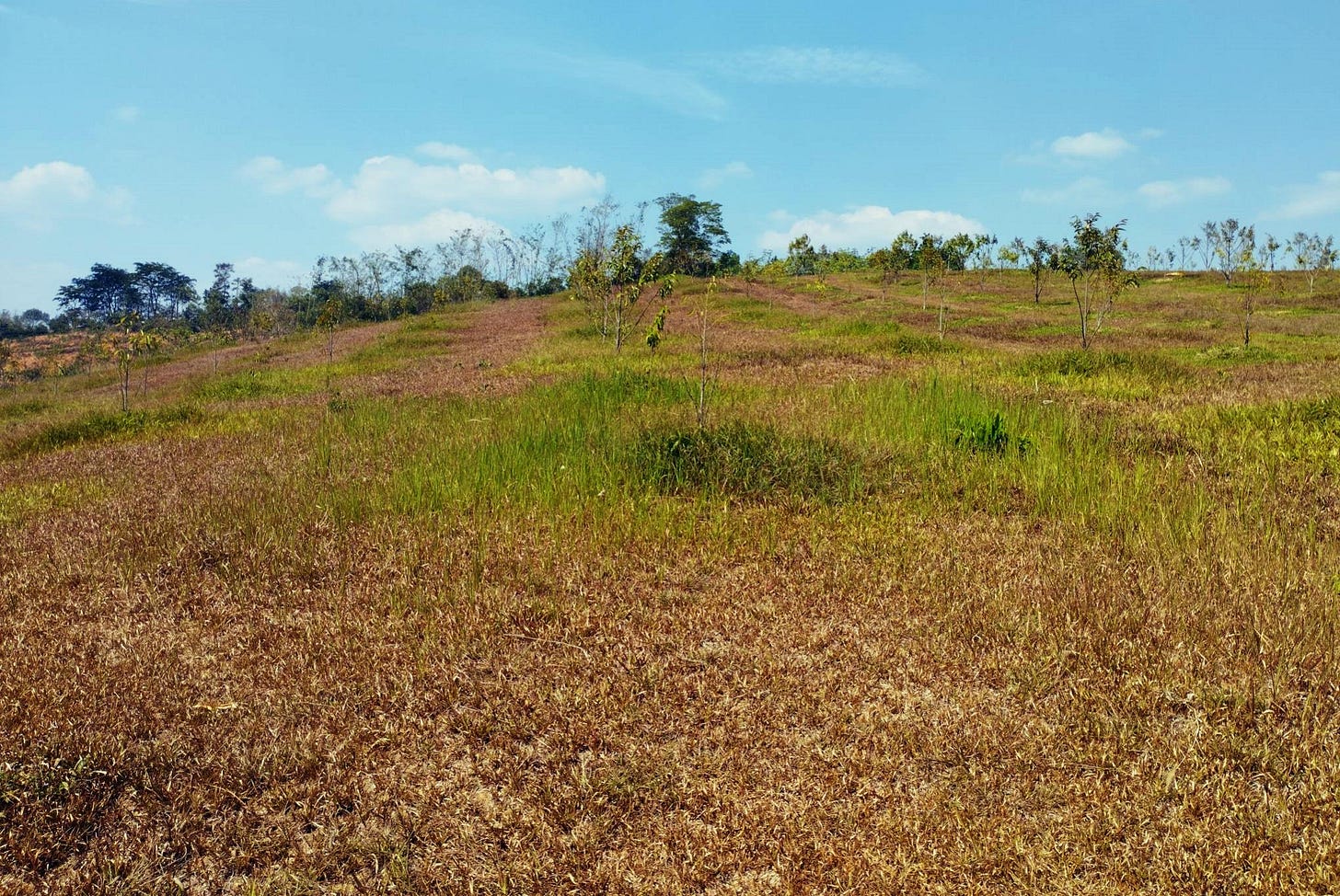
Chanthaburi lays outside the natural range of Durian, and although wild Durian trees have become naturalized, growing conditions are not ideal for commercial cultivation without irrigation. When irrigated, Durian is a very productive crop – or at least has been, back when the weather was normal. We are situated right on the border between and tropical savanna and tropical monsoon climate (Aw and Am in the Köppen climate classification) – the subdistrict to the north of us is already considerably drier than ours, and instead of Durian, people there grow mainly Longan and Mango (both of whom prefer drier weather).
The absolute and utter lack of concern over the future climate is a widespread phenomenon among fruit farmers in Eastern Thailand, and, presumably, for most farmers nationwide. Sure, people complain, but even our friend Uncle Tip is reluctant to elaborate on the topic. It seems like the implications of what we are experiencing are too frightening, the future too uncertain. The prevalent mentality here: it’s better not to talk about it and to hope the problem goes away on its own – a dangerous bet when facing runaway climate change and unbridled ecological destruction. But the underlying, fundamental cultural maxim prevalent in so many Asian cultures – “see no evil, hear no evil, speak no evil” – turns out to be catastrophic when applied to modern circumstances.
When asked if he thinks it will be possible to cultivate Durian commercially ten years from now, another villager simply brushed aside our (genuine) concern and retorted, slightly annoyed and without any further explanation, that we “shouldn’t worry about such things.”

This response is especially strange when you consider that climate change is nothing new for the villagers here: until about two decades ago, Lychee orchards covered large areas in the region - but as the cold season got shorter and warmer around the turn of the millennium, the trees stopped fruiting reliably. No matter how much people sprayed and fertilized, the harvests were erratic and far below the previous average, so people responded by razing Lychee orchards to the ground and planting Durian instead - at first, intercropped with Mangosteen and Longkong, but with increasing frequency as monocultures. And when I say monocultures, I mean mono-cultures. We always joke that the ideal orchard for people here would be a literal desert with neat rows of Durian trees crisscrossing the bare ground as the only living beings – no annoying “weeds,” no obnoxious “pests,” just the target crop without any competition (or help!) from the larger ecosystem.
This joke has gotten considerably less funny over the last few years, as we watched excavators rip up entire hillsides, dig deep into the valleys, and decapitate hilltops. As I write this, the excavators have been ravaging nonstop for months on end. Our garden is situated on a hillside, perched above the village and the valley below, so we hear the constant roar of the engines from below, day after day, and we see the havoc wreaked by their gigantic claws.
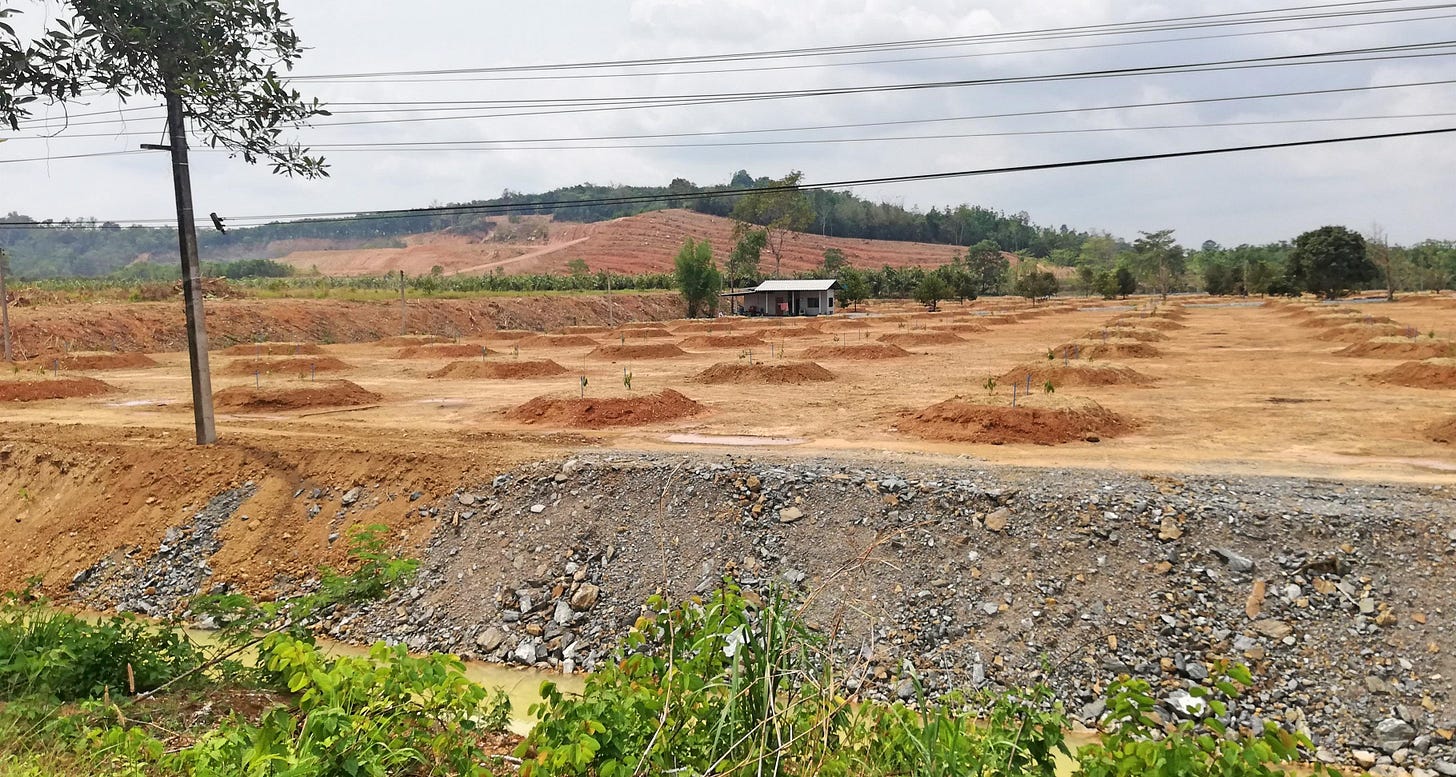
Mainly, the excavators are terracing steeper orchards, and banking up little piles of dirt on which to plant new Durian trees.
Planting the trees on those little mounds is a relatively new trend, and probably connected to the belief that this technique will keep the dreaded Phytophthora fungus at bay that has been infecting and killing more and more Durian trees in recent years. To visualize the scope of the problem, it suffices to point out that fungicide imports doubled over a period of only four years (between 2014 and 2018). Uncle Tip spent 6,000 Baht “healing” a Durian tree (as he calls it; see third picture below) from an infection last year, and almost all trees in some of the orchards here have their trunks painted red with lime and fungicides. While elevating the trees above the ground level might help preventing disease (Phytophthora uses water as a vector), it creates new problems, namely an increased susceptibility to wind damage and an increased need for watering, since the soil dries out even faster if elevated and exposed to wind. A relatively mild storm last year uprooted a dozen Durian trees that were just nearing maturity in the orchard of an acquaintance. The “Durian only” policy of fruit farmers means that no wind breaks are planted, no cover crops protect the soil from sun, wind and water, and no biomass crops are left to feed the soil through “chop-and-drop.” In the orchards considered “successful” and “beautiful” by local standards, uniform stands of identical, cone-shaped Durian trees tower over meticulously trimmed golf lawns yellowed by herbicides.
But terracing does even more damage: whatever topsoil layer may be left is buried under meters of red clay – the subsoil! – because, as we were told by a farmer, the red clay holds in place better and doesn’t wash away as easily. The same farmer enthusiastically assured us that the soil on a newly terraced hillside was “full of life.” Durian trees are planted straight into the red subsoil, and each tree is accompanied by a little sprinkler. Red clay holds almost no water, and most of the irrigation water simply runs off or pools on the surface where it heats up an evaporates, and after a few hours of tropical sun, the soil is as dry as before – cracked open and baked in the sun.
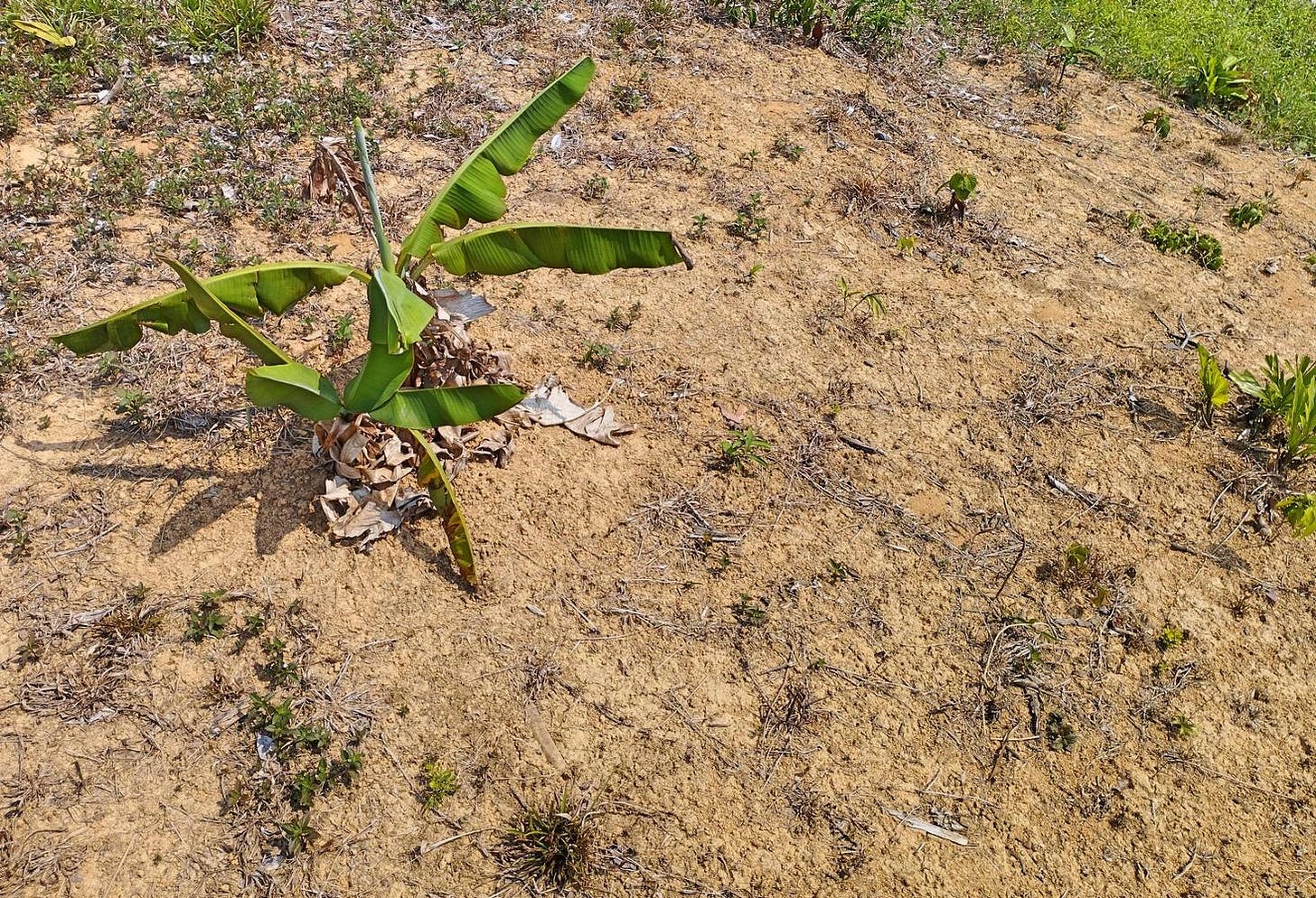
It has gotten to the point where we ask ourselves if it is possible that the majority of modern farmers simply don’t know how to plant trees anymore, if all that traditional ecological knowledge is already lost – it sure seems like it. Instead of mixing good soil with plenty of organic matter to fill into the planting holes, and mulching heavily to ensure the soil stays moist and insects start burrowing, creating pathways for water and air to infiltrate deeper into the soil, all eggs are thrown into the same basket: daily watering and heavy applications of nitrate salts and pesticides will have to do what a living soil would otherwise. The problem is that the soil does it for free, whereas fertilizers, toxins and other inputs have to be bought.
We don’t know where the terracing trend comes from or when it started, but we highly doubt that the villagers came up with it themselves. The mindset underlying this totalitarian land consolidation, this brutal simplification of the landscape, is that of an engineer, someone who has never thought of himself as part of (or dependent on) the ecosystem. As I’ve written elsewhere, “planting trees has become a geometrical exercise, informed by mathematics rather than by the needs of the plants.” When terracing mountainsides, the entire vegetation is razed and burned first, contributing to the thick haze that has been dimming the sun for months already. It is fire season, and all throughout Southeast Asia massive fires are burning as people clear land and burn crop residues. This is the work of people who mistake themselves to be as powerful as the gods themselves. The Earth shall abide by their will; mountains are turned upside down, waterways straightened, and swathes of land are molded into the desired shape, based on arbitrary concepts of “efficiency.”
Instead of working with the land and thinking about how to best make use of its unique local characteristics, simplistic geometrical uniformity is imposed on the land by force. Conventional farming is an all-out war waged against all living beings that can’t be sold for profit.

Fruit farmers get their agricultural education from the ubiquitous chemical stores, shops that specialize in fertilizers, pesticides and plant hormones, and aggressively and ruthlessly market their products to customers. If there is anything wrong with your trees, you're surely not spraying enough. Maybe try this new all-round fungicide, with an improved formula, that sticks to the leaves even longer. แรงสุดๆ – “the strongest/most intense formula ever!” – is a common slogan used in pesticide ads. What most fruit farmers don’t know is that the fungus that causes the most damage to Monthong Durian monocultures has already developed resistance to fungicides. As a study about fungicide resistance in Thai Durian orchards explains:
“The increase in fungicide-resistant strains in the pathogen populations has been resulting in serious economic problems for farmers. The incidence of fungicide resistance in the field has become an important factor limiting the efficacy of disease-control strategies. Spending on fungicides has also increased because few farmers know that fungicide-resistant strains exist, meaning that they still use the same fungicides. Furthermore, the production costs for crops have increased as growers apply fungicides at higher dosages and greater frequency than before. The side effects of fungicides may come with risks, such as serious hazards to humans and the environment.” [Emphasis added]

Much of the media (as well as official government outlets) continues to downplay the seriousness of the issue, often by uncritically quoting industry propaganda and equating farmers with parents taking care of their children. A common sentiment you hear quite often is that it would be an overstatement to think that we are all being poisoned with every bite. The problem is, we are being poisoned with every bite - and with every breath. And this issue goes far beyond pesticide usage or ubiquitous microplastics: rainwater now contains alarming amounts of PFAS, a group of anthropogenic compounds nicknamed “forever chemicals” that contain some of the most toxic chemicals known, so even organic food is increasingly contaminated as they bioaccumulate in plants.
According to the Thai Pesticide Alert Network (Thai-PAN), the majority of fruit and vegetables sold in Thai markets regularly exceed the maximum pesticide residue level permitted by a large margin. And don’t fall for the illusion that Durian is safe because it has a thick skin: pesticides are able to penetrate even thick husks and accumulate in the flesh of both the Durian and the human who eats it – we become what we eat. As a general rule, just because the industry says something is safe doesn’t mean it actually is. There is no shortage of great books and articles exposing the lies and misinformation campaigns run by the chemical manufacturers, whose unscrupulous practices intentionally muddy the waters of public discourse. This is the world the dominant culture has created, and every industry – especially the agrochemical industry – contributes to the further toxification of the planet. Even at extremely low concentrations, pesticides cause significant harm to all living beings (often disrupting the hormone household of the body and causing damage to the genome), no matter what the chemical industry claims.
Yet after five years of living deep in Durian Country, we have yet to meet a single farmer who wears more protective gear than a surgical mask or a cloth balaclava. Why? Because, as many farmers have explained to us, wearing adequate protective gear is “too hot.” And the people who are educated enough to know the full extent of the dangers of pesticides simply pay migrant workers from Cambodia to spray their orchards. An argument you often hear when talking to farmers about this issue is “Well, this-and-that guy sprayed chemicals all his life, and he’s fine.”4 This logical fallacy is called a “faulty generalization” – it’s akin to saying “But Uncle Joe smoked all his life and didn’t get cancer, so smoking can’t be that harmful.” Toxins bioaccumulate in our bodies and are being passed on to our children.
Some people even claim that they use pesticides as “medicine” (the word is the same in Thai – ยา) to take care of (or, to directly translate the word that’s being used in Thai, to heal – รักษา) their children’s “boo-boos”.
Really?
I wonder what kind of psychopath parents douse their offspring with highly toxic chemicals to heal their “boo-boos” – this sounds like a clear case for Child Protective Services to me. And, as we all know, nothing says ‘I love you’ like the immense pressure to perform of a bunch of overly-ambitious helicopter parents pushing their kids to be the “most productive forms of themselves.” People who treat their children (or other living beings) like this are clearly unfit to retain custody.
In reality, farmers treat their trees not like children, but like slaves. The trees are literally being worked to death (Durian trees in commercial orchards die spontaneously all the time, presumably all cases of Karōshi – the Japanese term for “overwork death”), and the trees’ health matters only in relation to their ability to produce fruit. This “plant slavery” is more obvious with other, hardier species of trees, like Mango (people sometimes light fires underneath the trees to force them to fruit) or Petai Bean (people slash deep cuts into the trunks with machetes) – if a tree thinks it’s going to die, it will try as hard as possible to produce fruit to ensure the survival of its genome. Since cultivated Durian trees are rather weak and won’t survive injuries inflicted to force fruiting, the ruthless exploitation and mistreatment of the trees is more subtle, but it’s lightyears away from a caring parent-child relationship.5
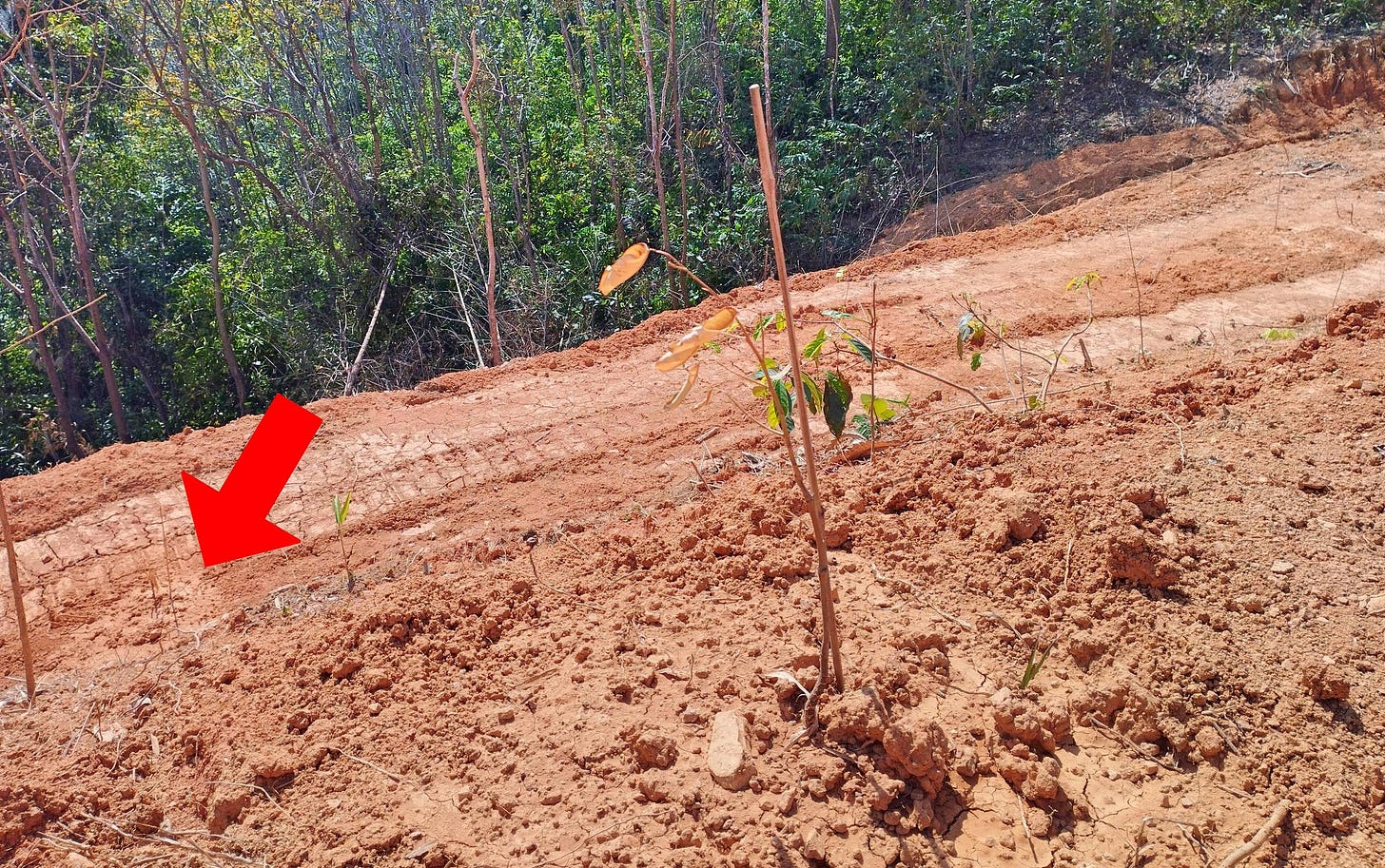
If asked why their orchards contain only a single species of trees, and why the grass needs to be carpet-bombed with herbicides after already being trimmed with brush cutters, the number one reason stated by Durian farmers is that any vegetation would make it harder to pull the long rubber hoses they use to apply pesticides over the ground. Durian orchards are sprayed at least once per week(!), so the ground needs to be cleared at all times to ensure smooth operation.
Let that sink in: the reason why biodiversity is reduced to the bare minimum is so that biodiversity can be reduced even further! Ecocide begets even more totalitarian ecocide.
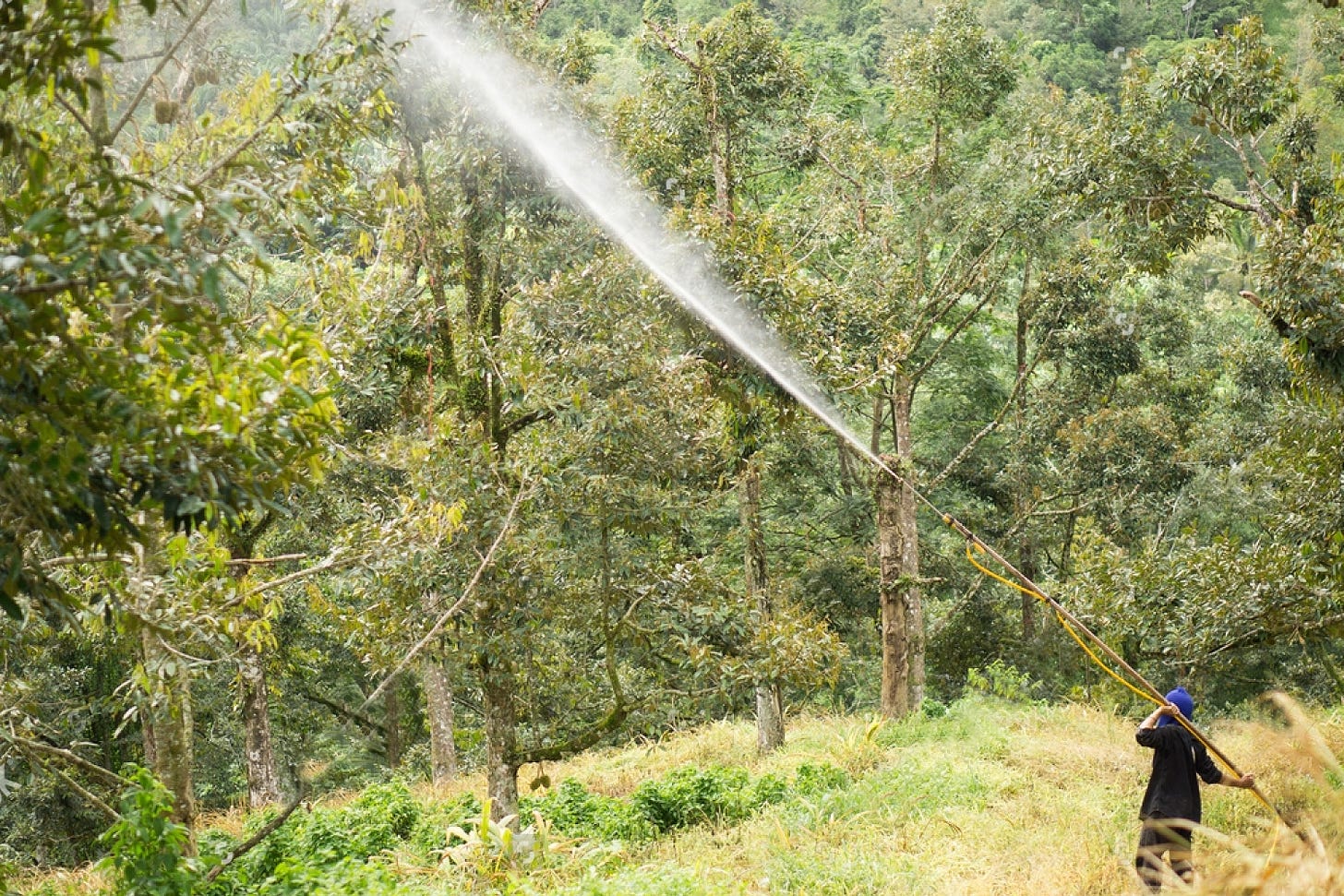
Most fruit farmers use Durian trees as a means to convert money (fertilizers and pesticides) into more money (profits from selling Durian). The profit margin is getting smaller by the year, an issue that is exacerbated by Vietnam entering the Durian business. Being situated closer to the Chinese border, Vietnam can harvest the fruit at a later stage of ripeness, thus fetching a better price. Transportation costs are cut as well - and transporting Durian in air-conditioned shipping containers is expensive. This has led to Chinese investors pulling out of Thailand, and shifting attention and capital to their next-door neighbor. China is even experimenting with growing their own Durian, but it is highly questionable if this effort is commercially viable, since even Southern China lays well outside of the range of Durian.
As previously mentioned, over 80 percent of commercially grown Thai Durian are an export commodity, with most of it being shipped straight to China, where it is processed into a wide range of industrial “food” products, mostly unhealthy snacks (like chips, sweets, ice cream or instant coffee) with Durian flavor.
The majority of pesticides, as well as a considerable amount of chemical fertilizer used in Thailand is imported from – you guessed it – China. China reaps all of the economic benefits with none of the risks towards health and environment: farmers here literally dowse themselves (and the land they inhabit) in poison so that China can enjoy massive, flawless fruits.
The problem is that chemically farmed Durian isn’t even that good – many people report feeling “hot inside” and “dizzy” after eating only half a fruit, and it is generally advised to limit consumption.6 Our immediate neighbor doesn’t even eat the Durian from his orchard – which should be an obvious red flag. Durian farming is first and foremost a business, and you’re in it to make money, not to eat fruit. Quantity is vastly more important than quality, since the Durian flesh will be processed beyond recognition anyway.
In season, we eat three or four organic fruits from our garden per day, and while they make you feel incredibly stuffed and sleepy, we never had any of the unpleasant sensations people complain about with commercial Durian.
We were told by our friend Som that Chinese businesses have started building giant, air-conditioned storage facilities (sometimes spanning over an acre!) that allow them to indefinitely store Durian flesh at subzero temperatures. This way they are able to control the prices, which are otherwise influenced by supply and demand, as well as cut transport costs. During Durian season, storage and loading facilities are clogged, there is lots of demand for labor, trucks and air-conditioned containers, and traffic on the roads increases visibly: shipping costs increase.
Fruit farmers are at the mercy of the market, since they can’t withhold the sale of their crop until the price increases again, like rice farmers often do. But the gigantic cold-storage warehouses have this ability. The real winners of the Durian business are, first and foremost, the chemical manufacturers, Big Ag, Big Oil, a handful of large Sino-Thai landowners, and parts of the Chinese food industry. The farmers and farm workers put in all the work, expose themselves to hazardous conditions every single day of their lives, and basically compromise the long-term health of both themselves and the environment they inhabit, so that Chinese supermarkets can sell Durian-flavored snacks.

The farmers in the area are trapped. Online newspaper Prachatai recently reported that over 90 percent (!!) of Thai agricultural households are indebted, and the average amount owed is over 400,000 THB (about 12,000 USD), which is a fortune for rural Thai standards. Even if people wanted to change the way they farm, they simply can’t. They have to pay the yearly interest on their loans (most people don’t even have a chance to actually pay back some of the amount owed, but simply pay the yearly interest to keep the bank quiet).
When fertilizers and pesticides were first introduced, profit margins increased substantially over a very short period. To be able to understand how things came to be this way, we have to try to envision what happened at that time, during the so-called “Green” Revolution.
As the first people in the village started using the newly available fertilizers, their harvests increased substantially, often within a single season, leaving the entire village thunderstruck. At that time it must have seemed like magic: a handful of greenish-blue granules, and you harvest a lot more without the additional burden of allocating and applying manure or other natural fertilizers. Everyone who doesn’t follow this futuristic new agricultural regimen must be a fool who wants to stay poor! Little did the farmers know that chemical fertilizers compromise soil health in the long term, and actively reduce soil fertility, biodiversity and water retention capacity (all of which are intrinsically connected). But the future seemed glorious, cornucopian, promising untold riches to everyone with a strip of land. Of course you could risk taking out a large initial loan to finance the first round of chemicals, because you’d surely be able to pay it back in time.7 The future looked bright.
But only a few years later, profits slowly started declining due to the increase in inputs, and they’ve been declining ever since – a trend only offset by bringing more land under cultivation and intensifying the entire process by artificial means, which mainly means more hydrocarbon inputs. Uncle Tip says that his trees are like “spoiled, fat rich kids” (his words!), insatiable gluttons demanding ever more food the more you feed them.8
This decline in net productivity has been inversely exponential so far, and this year and the next – with El Niño looming on the horizon – could likely be decisive.
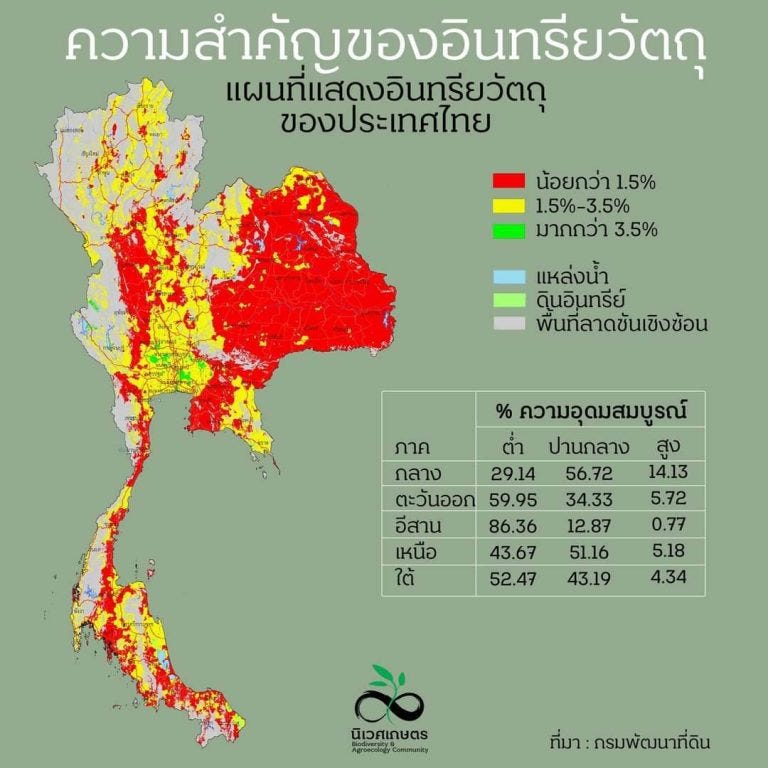
Our friend Som told us again and again that he has enough, that he would like to live more like we do – more self-sufficient, planting a greater diversity, and gardening in an organic, health- and happiness-oriented way – but debt makes this lifestyle change impossible. If you would just switch from chemical-intensive, high-input agriculture to a more ecological way of farming, you will have to endure years without any meaningful profit. Industrial agriculture has destroyed the soil so much that it takes a few years (and hard manual labor) to restore some of its original fertility. Nobody has that time. Moreover, there is no absolute guarantee for success, no definite and detailed roadmap that can be applied everywhere. To make matters worse, the government has zero interest in promoting alternative approaches, partly because of how influential and powerful Big Agriculture is in Thailand. People think that things in the United States are bad (and they undoubtedly are!), but things here in Thailand are looking eerily similar. Agricultural corporations have been trying for years to push legislation that makes it illegal for farmers to save their own seed, and if it wouldn’t have been for the brave resistance of civil society led by a few NGOs, this legislation would have long passed. The Department of Agriculture went as far as to try to secretly amend critical laws in the period when the Thai populace was mourning the death of their late King Bhumibol in 2016.
As an illustration, we recently watched a conference on agroecology, hosted by the Regional Center for Social Science and Sustainable Development (RCSD) at Chiang Mai University and led by agroecology veteran Professor Peter M. Rosset. The attendants were not allowed to use the name of Thailand’s biggest agricultural corporation, CP Foods, so Prof. Rosset employed the Voldemort-esque phrase “a certain large company that we’re not allowed to name” whenever talking about the company couldn’t be avoided.9
CP Foods is the single biggest land owner in Thailand, the world's largest producer of feed and shrimp, and a global top three producer of poultry and pork. Locally, they are a mafia-like organization with a long history of silencing any opposition, as is evident in the attempts (plural!) to sue the director of environmental NGO BioThai into submission for daring to criticize them. CP Food’s totalitarian standing makes it impossible to have any conversation about the dangers and downsides of industrial agriculture (which also explains Thailand’s utter lack of farm animal welfare organizations that openly criticize factory farming).
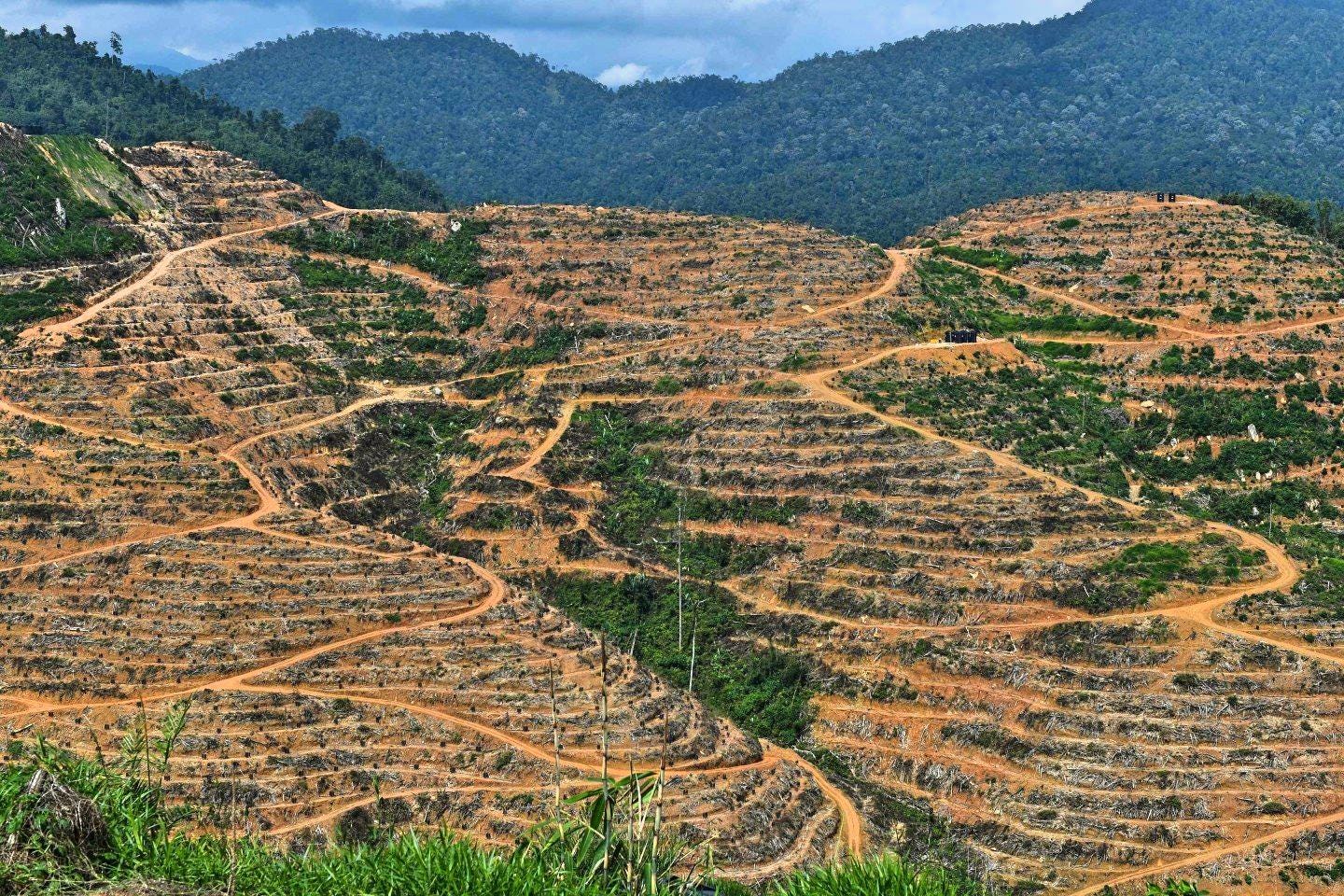
Durian farming here is a ticking time bomb, and the inevitable explosion is not too far off into the future. People are unprepared, and the economic impact will be devastating. There is no help from the government besides vague promises for monetary compensation in case of failed harvests, which is another problem in and of itself: whenever there is some trouble in the agricultural sector, be it drought, flood or storm, people immediately open their mouths like hungry chicks and wait for the government to throw money into their wide-open throat. Political parties’ agricultural policies vary mainly in exactly how much money they’re willing to allocate to shut up farmers, but no political party has any idea how to solve the underlying issues, or even what the underlying issues are. Farmers don’t become politicians, so politicians are hopelessly disconnected from reality and push solutions proposed by their industry-sponsored “advisers,” such as using drones to apply pesticides, or using “AI” to “help smallholders.”10
Nobody, including us, knows what to do. People are desperate, they fear an uncertain future, but as a response, as problems accumulate and intensify, they in turn intensify their efforts. What hasn’t worked last year must be solved by doing the exact same thing this year, just more of it. The problem is, the entire system is bound to fail. It never worked to begin with. It is like one of the early contraptions that hoped to achieve powered flight in Daniel Quinn’s Allegory of the Hapless Airman from his book ‘Ishmael – An Adventure of the Mind and Spirit’. The main character, a gorilla named Ishmael, describes how our entire culture is akin to one of those brave, early aviators sitting in a pedal-driven contraption with flapping wings that has been pushed over the edge of a cliff in the hope to achieve flight. The airman is ecstatic and pedals away fervently, the wings of his craft flapping beautifully, believing he’s flying – when he’s actually in free fall. Soon he realizes that the ground seems to get closer and closer, and although this worries him a bit, he brushes off any concerns – he just has to pedal a bit harder. After all, he’s come so far, so why give up now? No, he just needs to hang in there, and pedal away with all his might.
The problem is this: even if he had the power of ten, a hundred, or a thousand men in his legs, it wouldn’t help him: his craft is simply not designed to fly, since it blatantly flouts the laws of aerodynamics. His machine is simply incapable of flight.
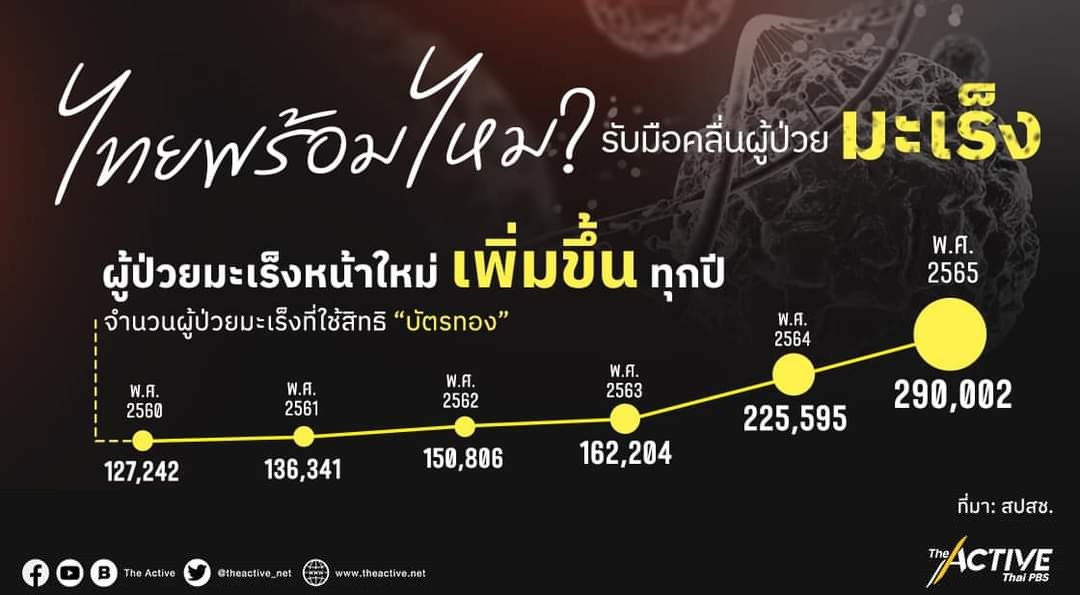
This is exactly the situation we find ourselves in with regard to industrial agriculture. Procuring food in this way is simply irreconcilable with good health, of both the ecosystem itself and its myriad inhabitants, among which we count ourselves as well. Even worse, it is inherently irreconcilable with a habitable planet. Problems created by broad chemical applications are tackled with even more chemicals. A landscape that has already lost most of its fertility, integrity, diversity, resilience, and beauty to short-sighted modern human modification faces even more pervasive modification. Control begets more control, and dominance begets more dominance. How anyone could ever think it is a good idea to try to poison and bulldoze our way to food security and abundance is beyond me. It is about time to realize that industrial agriculture is simply incapable of flight. It never escaped the pull of gravity, although it sure felt like it for a while. The war against Nature can’t be won.
As with so many problems right now, there simply is no solution. The manifold problems that come with industrial agriculture (health hazards, pollution, soil erosion, emissions, deforestation, desertification, marine dead zones, and the vastly inflated human population it enables) are far beyond the point of solvability. It’s a hard truth, but the sooner we accept it, the sooner we can start figuring out what comes next without being limited by the ideological and creative straitjacket that the dominant culture has forced us into. I thought about ending this article on a hopeful note about how regenerative farming is able to feed plenty of people as well, without destroying the land, but the chances that this will happen on any meaningful scale before it’s too late are very low.11
More and more often, I find myself thinking in all seriousness that the best option is to simply wait for the collapse — to be able to have a chance to start over, without the restraints put on us by this culture. It’s not going to be easy, but we have forgone our chance at ‘easy’ a long time ago. It’s time to face reality.
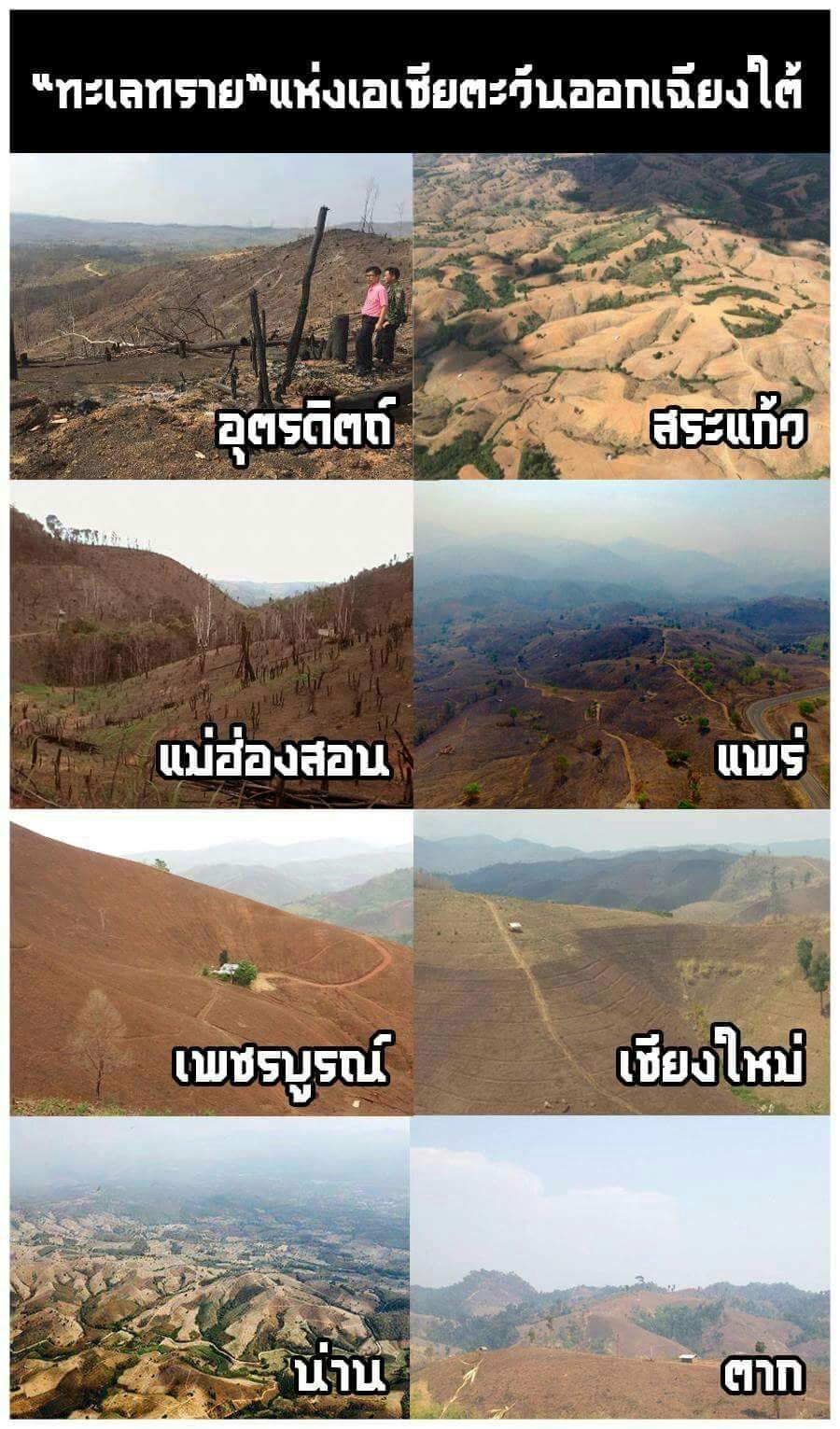
I write stuff like the above in my free time, when I’m not tending the piece of land we’re rewilding here at Feun Foo. As a subsistence farmer by profession I don’t have a regular income, so if you have a few bucks to spare please consider supporting my work with a small donation:
If you want to support our project on a regular basis, you can become a Patron for as little as $1 per month - cheaper than a paid subscription!
Anyone who claims that Durian “smells bad” should shut their pie hole, immediately. We are not the same.
Most Durian farmers don’t even harvest their fruit themselves, as this is a difficult undertaking that requires skill and courage. Note that this is only an issue if the Durian is grown for export and has to be harvested while still unripe – real connoisseurs wait for the fruit to drop naturally. Only then does it develop its full flavor.
The area we live in is mountainous, and many orchards are situated much higher than the water reservoirs that irrigate them. Vast amounts of (still) cheap fossil fuels are the only reason those orchards can be farmed in a commercially viable way.
I have to add that the standard for who is considered “healthy” is a lot lower around here. Chronic illnesses are the norm rather than the exception, very old people are a rare sight, diabetes and cancer are ubiquitous, and many people have visible ailments like chemical burns, rashes or benign tumors.
In any case, the goal shouldn’t be a relationship based on the traditional, hierarchical child-parent relationship advocated by the dominant culture (indicating dependence, disparity and utility), but – in accordance with reality – an unconditional, reciprocal symbiotic relationship between two entirely unrelated species in which both species benefit. Humans are by no means in any position to call themselves the “parents” of trees, since most trees are much older than us in evolutionary terms, so if anyone is the child, it’s definitely us. Maybe we can learn something from the trees. As for the trees we created through selective breeding, they are not our children, but our dependents. You don’t make babies through selective breeding (yet).
To make things worse, sellers often use chemicals to speed up the ripening process. One such chemical that is widely used is calcium carbide, a dangerous industrial chemical that produces the highly toxic compounds phosphine and arsine, leading to reports of nausea, vomiting, diarrhea, burning or tingling sensations and numbness of the mouth, headache and dizziness. Calcium carbide produces acetylene when combined with moisture in the air, which mimics the effect of the fruit hormone ethylene in hastening the ripening process of the fruit.
We know a great many families that are still struggling to pay off loans they took decades ago. What could easily be considered predatory lending seems to be the main strategy employed by the Bank for Agriculture and Agricultural Cooperatives (BAAC).
The “spoiled kids metaphor” is commonly used by farmers who have a greater sense of the underlying problems (but are unable to do anything about it). It is often applied to pesticide usage and irrigation as well, as rich kids who have everything they desire and never have to encounter difficulties or endure suffering are comparably weak in later life. An immune system that never had to deal with pathogens itself will be unable to fend off even the smallest infections. Trees that encounter hardship in the form of water stress early on will make deeper roots and learn how to conserve water – this practice makes for stronger trees, but smaller profits in the short term since they grow slower.
The only reason I dare to criticize businesses and banks is the fact that this blog has a rather limited reach, and powerful Thai politicians and business tycoons probably don’t read it. Let’s keep it that way, so please don’t share this widely. But seriously: I wouldn’t dare to publish this article in Thai with my name underneath it. Despite being categorized as a “developing” country, in terms of freedom of speech and freedom of the press Thailand is quite totalitarian: journalists, environmentalists, writers and thinkers still face prosecution and harsh punishment for reporting actual events, stating simple facts, or expressing their opinion. Especially as a foreigner it’s usually best to keep your head down, as “the nail that sticks out gets hammered down”.
A strategy that presumably consists of asking ChatGPT “how to help Thai farmers.” When asked, ChatGPT will actually give you a list that sounds eerily like the exact same thing that political parties here propose in their campaigns. ChatGPT recommends to 1. Provide subsidies, 2. Improve infrastructure, 3. Invest in education, 4. Expand access to markets, 5. Protect farmers from price volatility, and 6. Increase research and development. This sounds exactly like something you would read in a random leaflet that any of the parties hand out.
I also want to avoid sounding like I’m merely blowing my own horn. What works for me wouldn’t necessarily work for a lot of other folks, and I’m aware that most farmers simply can’t switch to a more ecologically sound farming practice, at least not until they’ve been forgiven all their debt – which is, let’s be honest, not gonna happen anytime soon – and their land has been allowed to recover for about a decade. We don’t have a decade. At the same time, I try to grapple with the futility of what we are doing here, versus runaway climate change busting one tipping point after the other. Even if you have strong, organic Durian trees – will it matter twenty years from now?



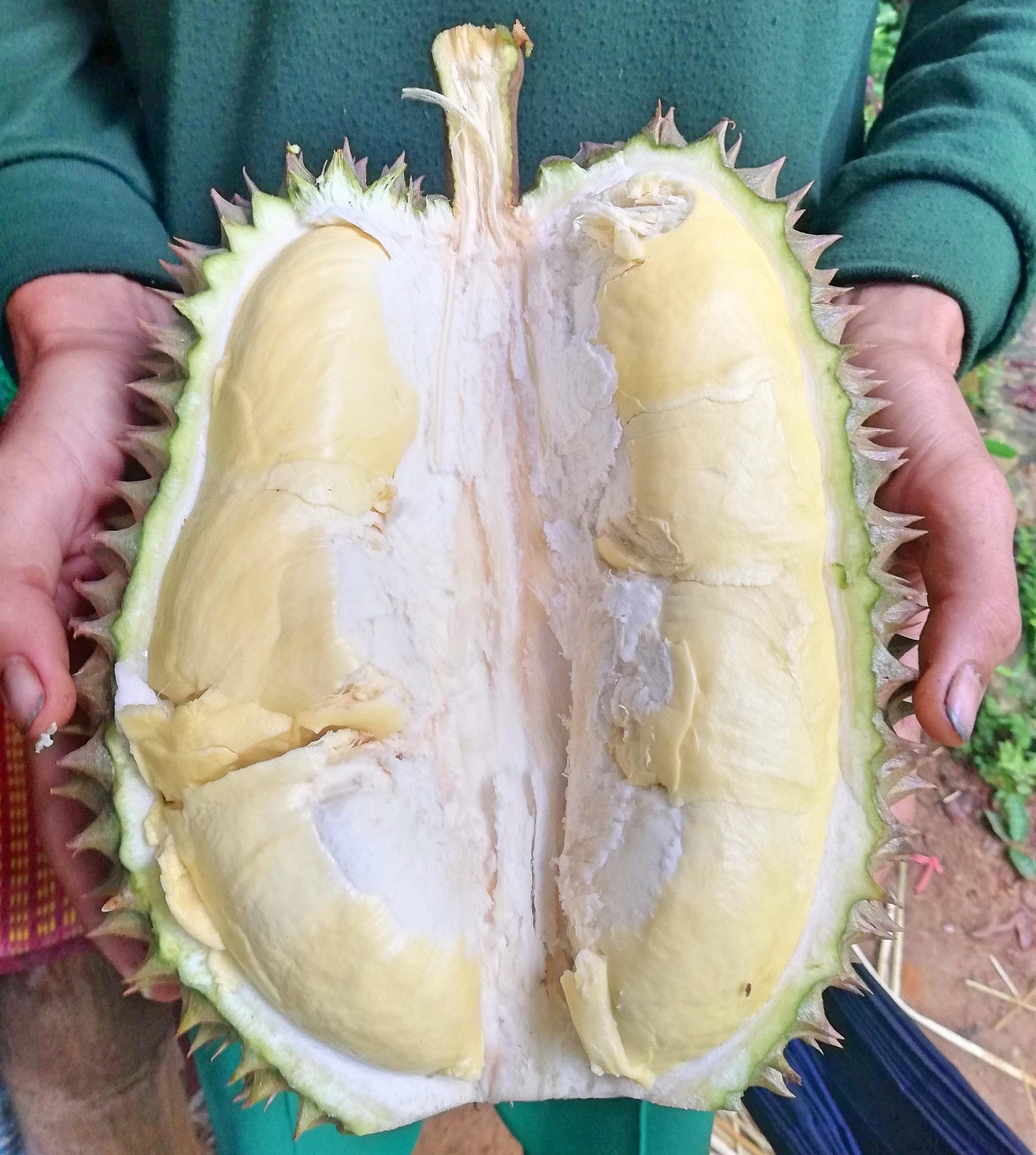
This is so depressing i struggled to read till the end. But it is not new to me. We homestead in Malaysia and it is the same here. We often smirk at the Thais for picking unripe durians, it is simply unacceptable here. The taste standards for durian is probably much higher here since durian is native to Malaysia (even the name derives from Malay for thorn - duri). I have seen some old durian trees in the forest that are so magnificent I could kneel and worship them. Their golden crowns emerging way above the canopy. Makes me cringe when I see low branching durian trees spaced widely. Interestingly it is the more educated, wealthier, urban folks that do slick-and-clean durian plantations. Best practice they call it!
Well done, a fantastic in-depth article that manages to extrapolate from the local to the systemic. So informative! Loved all the details you provided about farming in your area. I'm also based in Thailand, Chiang Mai, and up here - as you know - monoculture agribusiness is creating a different problem: the deadly haze (lasted from mid January to early May this year). Expecting a massive spike in lung cancer and respiratory illness -related deaths in coming years. Die-off is coming...let me count the ways... Thanks for your post, am now a subscriber and looking forward to more from you. Respect!